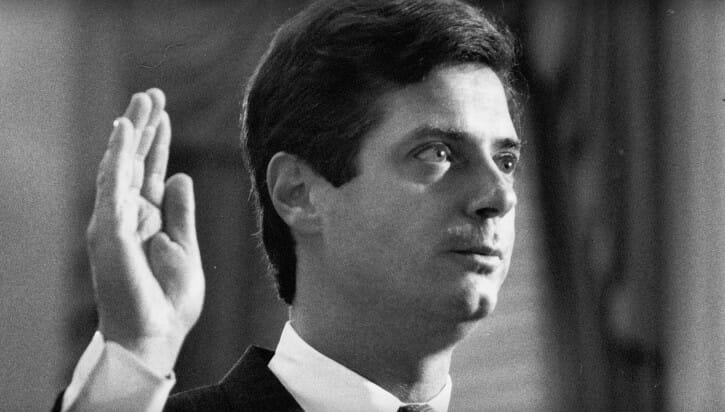【порнография покиргизски】Metro CEO Outlines Priorities for Transit System

By GWEN MURANAKA, Rafu Senior Editor
As Little Tokyo anticipates the opening of the Regional Connector in 2022, Stephanie Wiggins is stepping in to oversee the transformation of L.A.’s transportation landscape.
Wiggins is no stranger to Japan. The new Metro CEO revealed in an interview with The Rafu Shimpothat as a self-described military brat, she spent her early years in Okinawa, when her dad was stationed there in the U.S. Air Force.
“I spent five years in Okinawa. I was really young at that time, I have fond memories as a little girl,” Wiggins said. “I got to be back in Tokyo in 2007 when I got my MBA at USC.
“Growing up in a military family I got to engage and live with people of all different diverse backgrounds and it has served me well as I’ve developed this career in public transportation.”
Wiggins, who previously served as CEO of Metrolink, is the first woman to lead Metro. As CEO, she is tasked with managing a budget of nearly $7 billion, overseeing up to $20 billion in capital construction projects, and an agency with 11,000 employees that transports more than a half-million boarding passengers daily on a fleet of 2,200 buses and six rail lines.
A graduate of USC Marshall School of Business, Wiggins said her past experience has prepared her for the challenges of leading Metro.
“Even though my whole public transportation career has been in Southern California, I really think it has prepared me for the moment I find myself in leading Metro, third-largest transit agency in the country,” she said.
“Particularly as we’re coming out of the pandemic, it’s an exciting time to think differently about how we approach engaging with our communities, delivering our service and making sure we can play a larger role in the whole equitable recovery for L.A. County.”
When announcing her appointment in April, Metro Board Chair and Mayor Eric Garcetti hailed Wiggins as the right leader to guide Metro during an era of transformational change as the city recovers from COVID-19 and looks ahead to the 2028 Summer Olympics.
“Stephanie’s career makes her ideally suited to lead this agency at this moment: she’s experienced, determined, committed to equity, and steeped in L.A.’s transportation history, and she is the perfect candidate to carry Metro into its next chapter,” Garcetti said.
Wiggins said that people will be the focus during her tenure, both the employees of Metro and the passengers riding the transit system.
“We are doubling down on our commitment to an outstanding customer experience,” Wiggins said.
The NextGen Bus Plan reimagines the current bus system and through community input seeks to make it better. More than 20,000 L.A. County residents offered input, based on personal experiences.
“What we found when we talked to community: they wanted provide faster service, more frequent service,” she said.
Little Tokyo Transit Development
Wiggins will also be defining the next chapter for Little Tokyo.
Regional Connector and the station portal at First Street and Central Avenue are in the final stages of construction with completion set for 2022. Key parcels at Mangrove and above the station are set for joint development. In particular, during visioning sessions, the Little Tokyo community has looked to Mangrove, at the northeast corner of First and Alameda streets, as one of the last parcels of publicly owned land in the historic neighborhood.
On July 2, the L.A. City Council voted unanimously on a motion by Councilmember Kevin de Leon to authorize the chief legislative analyst to negotiate and execute a Memorandum of Understanding with Metro for the development of both Mangrove and the station site.
In the motion, de Leon says that the parcels represent “an invaluable development opportunity for the Little Tokyo community.”

“As both parcels are part of the Sustainable Little Tokyo vision, development of them provides an opportunity for collaboration with the Little Tokyo community, the city and Metro in identifying uses for these sites that meet the needs of the community,” he said. “It would be in the city and Metro’s best interests to coordinate these efforts by doing a joint Request for Proposals to develop both parcels in coordination with each other so that the community receives the most benefit.”
Last November, Metro put the brakes on a staff recommendation for awarding a contract for joint development of the station site at Central and First, following concerns raised by Little Tokyo stakeholders that the proposal did not align with the community’s priorities.
Wiggins said the emphasis of joint development is on projects that reflect the desires and needs of the community.
“The Metro Board has mandated at least 5-6 years ago that we look at joint developer relationships with developers, that we really don’t move forward with concepts that aren’t vetted with the community and don’t reflect the community’s desires and inputs,” she said.
“Joint development is always the key. We want to make sure all of the benefits that all of us plan for, as we have gone through more than a decade of planning and working with the community and now construction, we want to make sure that all those benefits are now realized. We want the small businesses that were there before construction started are there to yield benefits from the new patronage as a result of Regional Connector.”
Little Tokyo Community Response
Little Tokyo leaders welcomed the new Metro CEO, as the neighborhood looks ahead not only to the opening of the Regional Connector, but also the West Santa Ana Branch Transit Line. Metro staff released the Draft Environmental Impact Report (DEIR) on July 30. Four alignments are under consideration, including a route that would go through Little Tokyo under Alameda, with a possible station on Alameda between First and Second.
Metro is currently taking public comment on the new light-rail line, with three virtual meetings this month. The board will choose a locally preferred alternative.
Former Transportation Secretary Norman Y. Mineta, chair of the Board of Trustees of the Japanese American National Museum, said the museum is looking forward to partnering with Wiggins and other Little Tokyo stakeholders, as the Little Tokyo neighborhood works to address its transportation and development needs.
“The transportation needs of a vast and complex Los Angeles County will be well-served by Stephanie Wiggins as Metro’s CEO. Her years of experience and leadership – as the former CEO of Metrolink, and as deputy CEO at Metro – have established Ms. Wiggins as a transportation visionary who can get the job done,” Mineta said.
“Ms. Wiggins has already highlighted equity and customer service in her vision for Metro. I applaud her commitment to address the county’s transit needs, and we look forward to working with her as Metro completes its Regional Connector project and the new Little Tokyo station across from the museum.”
“The fact that Metro’s new CEO comes from Metro’s own ranks helps ensure continuity as Little Tokyo prepares to meet challenges associated with its new role as one of L.A.’s busiest transit hubs,” said Ellen Endo, Little Tokyo Business Association president.
“As the Regional Connector is finally nearing completion with several other Metro projects moving forward in and around Little Tokyo, the Board of Directors for the Little Tokyo Community Council looks ahead to continuing our collaboration with Metro for years to come. We are eager to partner with Ms. Wiggins and appreciate her focus on equity and community partnerships,” stated Irene Simonian, LTCC board chair.
Scott Oshima, Sustainable Little Tokyo project manager, added, “Sustainable Little Tokyo is excited to collaborate with the new Metro CEO Stephanie Wiggins in creating community-driven, equitable development on the Regional Connector station. Set to be the second-busiest transit hub in L.A. County, the station is key to the future of our historic Japantown.”
Wiggins said that Metro is committed to continue working with Little Tokyo as Regional Connector nears completion: “When I was deputy CEO we were working with the Little Tokyo community to talk about the Regional Connector and the impacts and there were a lot of lessons learned there about centering equity first in everything we do rather than responding to equity.
“We want to be a good neighbor. Now we are officially in the neighborhood, we want to be a part of the vibrancy of the Little Tokyo community. We want to make sure that Metro and the Regional Connector station in Little Tokyo are part of all the events.”






Related Articles